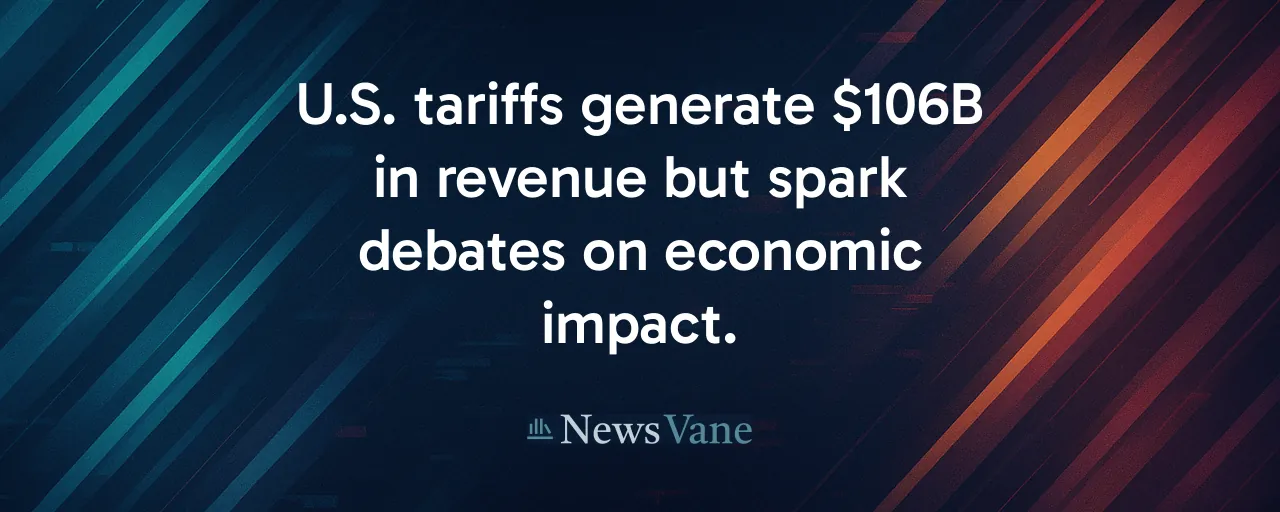A Record Haul Sparks Debate
The U.S. Customs and Border Protection (CBP) announced a staggering $106.1 billion in revenue collected since President Trump took office, with $81.5 billion tied to new tariffs. This milestone, touted as a win for national prosperity, has reignited discussions about trade policy's broader impact. While the funds bolster federal coffers, questions arise about who truly benefits and at what cost.
CBP's near-perfect 99.5 percent collection rate, driven by automated systems and targeted audits of 35,000 high-risk shipments, underscores enforcement's role. These efforts have economic ripple effects that touch businesses, consumers, and global partners, demanding a closer look at trade's delicate balance.
This revenue surge arrives amid a polarized debate. Supporters see tariffs as a shield for American jobs and security, while others warn of price hikes and strained alliances. The challenge lies in crafting policies that deliver economic gains without burdening households or sparking retaliation. A fair approach requires clear priorities and evidence-based strategies.
The Mechanics of Modern Tariffs
CBP's role traces back to the Tariff Act of 1789, when customs duties funded most federal operations. Today, the agency collects duties, taxes, and fees at ports of entry, screens cargo, and investigates evasion schemes like undervaluation or misclassification. Since 2017, 21 presidential trade actions, including tariffs on steel, aluminum, and Chinese goods, have reshaped global commerce.
Enforcement is no small feat. CBP's Automated Commercial Environment system and inter-agency task forces have secured $16.3 billion by catching duty evasion. False Claims Act penalties further deter fraud. Policing complex schemes, such as transshipment through third countries, strains resources even with technological advances.
The stakes are high. Tariff revenue, now 1.5 percent of federal receipts, rivals levels unseen since the 1930s. Studies indicate nearly all tariff costs pass through to U.S. import prices, raising expenses for businesses and consumers. Effective trade policy weighs these trade-offs, ensuring enforcement does not outpace economic benefits.
Economic Wins, Consumer Costs
Tariffs deliver quick revenue. Their broader impact is complex. Domestic manufacturers, particularly in steel and aluminum, gain a competitive edge, potentially creating jobs in protected sectors. Unions often back these measures, citing stronger local economies. Import-reliant businesses, from retailers to tech firms, face higher costs, which often trickle down to shoppers.
Research paints a sobering picture. Multiple studies confirm that U.S. consumers bear nearly 100 percent of tariff costs through higher prices. Low-income households, who spend a larger share on goods, feel the pinch most. Dynamic models estimate long-term GDP declines of 0.2 to 0.9 percent if foreign retaliation escalates, highlighting the need for precision in trade strategies.
Regional effects vary. Steel towns may see a boost. Port cities and export-driven sectors, like agriculture, risk losses from retaliatory duties. A balanced policy would pair tariffs with relief measures, such as tax credits for affected households or investments in supply-chain resilience, to soften the economic strain.
Global Relations on the Line
Tariffs don't exist in a vacuum. Foreign governments, facing higher U.S. duties, often respond with their own tariffs, targeting American exports like soybeans or whiskey. Such retaliation, reminiscent of the 1930s Smoot-Hawley Act's trade spiral, threatens global cooperation. Close allies, caught in broad tariff nets, may rethink economic partnerships.
The World Trade Organization's rules, designed to stabilize global trade, face strain as unilateral tariffs rise. Experts argue that narrow, targeted duties, paired with allied coordination, could address unfair practices, like foreign subsidies, without alienating partners. Strategic carve-outs for allies or multilateral talks could rebuild trust while advancing U.S. interests.
Legal and Oversight Challenges
The surge in tariffs rests on presidential authority. Legal battles loom. Lawsuits challenge the use of emergency powers for trade measures, arguing they bypass Congress, which holds constitutional tariff-setting authority. Bipartisan bills propose mandatory congressional review within 60 days of new tariffs, signaling growing oversight demands.
Courts could reshape trade policy. If rulings limit executive power, future administrations may need legislative approval for major tariffs. Transparent revenue allocation, tying funds to infrastructure or workforce programs, could build public and congressional support, ensuring trade policies withstand scrutiny.
Crafting a Fair Trade Future
The tariff debate reveals a shared goal: economic prosperity that benefits all. Narrow, time-bound tariffs, targeting heavily subsidized foreign sectors, show promise when paired with domestic investments. Sunset clauses and periodic reviews could satisfy oversight needs, while relief funds might ease consumer burdens.
Compromise is within reach. A border-adjustment regime, pairing moderate duties with export rebates, could align with global trade rules while preserving revenue. Bipartisan support for stronger anti-evasion measures and transparent spending offers a foundation for progress. The key is balancing protection with affordability.
Trade policy shapes budgets, defines global standing, and influences domestic opportunity. By prioritizing data-driven strategies and inclusive solutions, the U.S. can harness tariffs' benefits while minimizing their costs, fostering a system that works for businesses, workers, and consumers alike.
